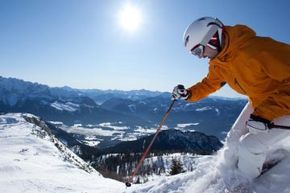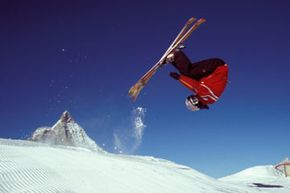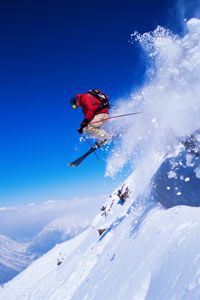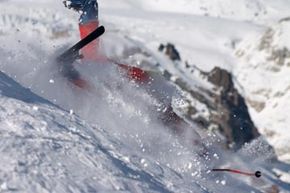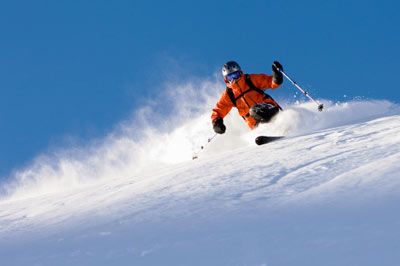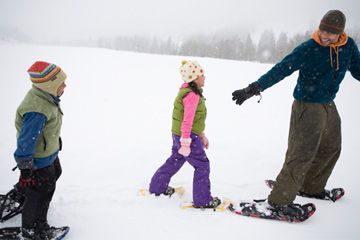When it comes to exciting (or terrifying) yourself with skis strapped to your feet, the possibilities are limited only by your imagination -- and good sense. While alpine (downhill) skiing is extreme enough for a good many of us, others quickly master it, grow bored and look for something more challenging.
Extreme skiing, also known as "big mountain skiing" or "free skiing," involves skiing down steep, forbidding slopes that offer at least 45-degree descents. The run is often a "make it up as you go" course of previously untouched powder. Skiers must make lightning-fast decisions throughout the run, lest they careen into a tree, a rock or off the side of the mountain itself (unless they're actually trying to ski off the side of the mountain, that is).
Advertisement
The slopes used for extreme skiing are sometimes not fit for climbing, let alone skiing. The first issue can be solved with helicopters, but extreme skiers embrace a belief that nearly every snow-covered landform is ski-able, and when they reach a portion that isn't, they just catch serious air and try to land on something that is.
The term "extreme skiing" for many people indicates any adrenaline-pumping form of skiing. It should be noted that the term, when used exactly, refers specifically to steep-hill skiing. However, as the practitioners of that sport have themselves taken on newer and bigger challenges (such as using wingsuits or airfoils to catch superhuman air at ridiculous speeds), they have expanded the generic meaning of extreme skiing without breaking it, because the evolving hybrid forms still often contain the steep-slope element.
And there's not much these extreme pioneers haven't tried. Skiing off ramps and flipping twice before sticking the landing? Check. Skiing off the roof of a building and parachuting to safety? Doable. Soaring off a mountain top in a flying-squirrel body suit? It's been done. Making up the course of your run on the fly as you ski down virgin powder from a summit that could only be reached by helicopter? You could book that trip online right now if you wanted.
If those possibilities don't excite you, you may just need someone to ski beside you and inject adrenaline directly into your heart. And, given their lust for the next great ski high, that too may already be old-hat to some extreme skiers.
Next we'll talk about some different ways you can careen down a steep mountainside.
Advertisement
